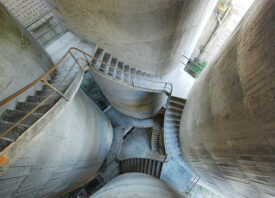Search this site
Finding Magic in Old, Forgotten, Mold-Covered Photographic Plates
As director of the collections of the French Society of Photography, art historian Luce Lebart spends most of her time making sure the objects in her charge are preserved for generations to come. It was to her astonishment, then, that she discovered within the archives a long-forgotten box of plates that after having been exposed to flood waters, had become the breeding ground for all species of fungi. Instead of discarding the mysterious collection, she found to her delight poetry within the “destroyed” pictures, which she later published in the book Mold Is Beautiful.
Although the historian was first intrigued by the prospect of tracking down the original creator of the gelatin plates, she soon realized that the mold, in all its fickleness, had become the true author of the pictures that lay before her. In places, the fungus seemed to join in harmony with the primary image, impersonating gulls in flight or mimicking the breaking of the sea.
It hardly matters, she suggests, what the images once were because now they’ve been surrendered to the whims of nature. With the phantom knowledge of some unknown photographer lingering only in the background, Lebart did what once she would have thought impossible: she took the mold as her unlikely collaborator.
So often, we trust photographs to safeguard our memories ad infinitum, or as Roland Barthes might have it, to “fasten [them] down, like butterflies.” We tuck them away inside cabinets and boxes, and we understand that they will always be there, should we choose on some rainy day to step backwards in time. But what Lebart’s extraordinary book suggests is that photographs are in fact material objects, organic, respiring things that can be ruined and reborn a thousand times over.
Find Mold Is Beautiful here.








All images © Luce Lebart




